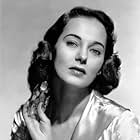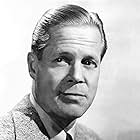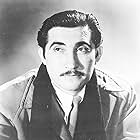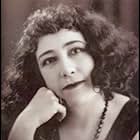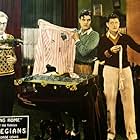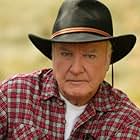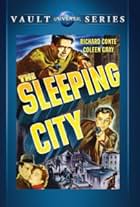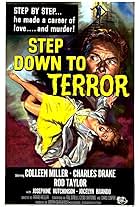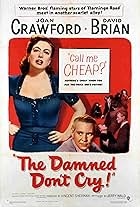VALUTAZIONE IMDb
6,5/10
960
LA TUA VALUTAZIONE
Aggiungi una trama nella tua linguaAfter stealing a gangster's money and his girlfriend, a doctor heads for a small village in Mexico.After stealing a gangster's money and his girlfriend, a doctor heads for a small village in Mexico.After stealing a gangster's money and his girlfriend, a doctor heads for a small village in Mexico.
- Regia
- Sceneggiatura
- Star
Märta Torén
- Laura Thorsen
- (as Marta Toren)
Emma Roldán
- Catalina
- (as Emma Roldan)
George J. Lewis
- Capt. Rodriguez
- (as George Lewis)
James Best
- Driver
- (non citato nei titoli originali)
Joe Dominguez
- Bias
- (non citato nei titoli originali)
Paul Fierro
- Bandit
- (non citato nei titoli originali)
Nacho Galindo
- Mexican Villager with Heartburn
- (non citato nei titoli originali)
Rock Hudson
- Truck Driver
- (non citato nei titoli originali)
Trama
Lo sapevi?
- QuizThe first U.S. film of Argentinean director Hugo Fregonese.
- Curiosità sui creditiIntro: Waste no moment, nor a single breath In fearful flight from Death; For no matter the tears that may be wept, The appointment will be kept... From: "Song of a Fatalist"
- ConnessioniReferenced in James Mason: The Star They Loved to Hate (1984)
Recensione in evidenza
### Movie Review: "One Way Street"
**By Edward Sterling**
Stepping into the cinema to watch Universal-International's latest production, "One Way Street," directed by Hugo Fregonese, feels like navigating the winding alleys of a noir-soaked labyrinth. This film, rich with the shadowy ambience of crime and retribution, anchors itself in the gritty reality of betrayal and the quest for redemption.
James Mason, delivering a performance both enigmatic and compelling, plays Dr. Frank Matson, a man whose veneer of calm conceals a maelstrom of desperation. Mason's portrayal captures the quintessential anti-hero, a character teetering on the precipice of moral ambiguity, pulling the audience into his tumultuous journey.
Supporting Mason, the luminous Märta Torén as Laura provides a stark contrast to the film's darker themes. Her character, though ensnared in the web of crime, emanates a glimmer of hope and humanity. Torén's portrayal brings an emotional depth that softens the otherwise relentless tension.
Dan Duryea, portraying the menacing mob boss, adds to the film's sinister undercurrent. Duryea's ability to infuse his character with a chilling sense of unpredictability keeps viewers on edge, embodying the palpable threat that looms over Matson's attempt at escape.
Fregonese's direction, paired with Irving Glassberg's evocative cinematography, masterfully captures the essence of noir. The interplay of light and shadow creates a visual symphony that underscores the film's central themes of conflict and resolution. The searing landscapes of Mexico, where much of the film unfolds, provide a stark, almost surreal backdrop to Matson's flight from his past.
"One Way Street" excels in its pacing, maintaining a relentless drive that mirrors Matson's own urgency. Frank Skinner's score punctuates the film's tense moments, heightening the sense of impending danger and the fragile hope of salvation.
However, while the film triumphs in many aspects, it does not escape certain clichés inherent to the genre. The storyline, though gripping, treads familiar paths, and at times, the dialogue slips into predictable tropes. Despite these minor shortcomings, the film's strengths lie in its atmospheric tension and the robust performances of its leads.
In a year where the silver screen has been graced with a multitude of crime dramas, "One Way Street" stands out as a testament to the enduring allure of the noir genre. It is a journey worth taking, a descent into the dark heart of humanity that ultimately suggests that redemption, though elusive, is not entirely out of reach.
In conclusion, "One Way Street" is a cinematic venture that, despite its occasional foray into the well-trodden, captivates and compels with its stark visuals, strong performances, and an unflinching gaze into the shadowy corners of the human psyche. It is, without a doubt, a notable addition to the noir canon of 1950.
**By Edward Sterling**
Stepping into the cinema to watch Universal-International's latest production, "One Way Street," directed by Hugo Fregonese, feels like navigating the winding alleys of a noir-soaked labyrinth. This film, rich with the shadowy ambience of crime and retribution, anchors itself in the gritty reality of betrayal and the quest for redemption.
James Mason, delivering a performance both enigmatic and compelling, plays Dr. Frank Matson, a man whose veneer of calm conceals a maelstrom of desperation. Mason's portrayal captures the quintessential anti-hero, a character teetering on the precipice of moral ambiguity, pulling the audience into his tumultuous journey.
Supporting Mason, the luminous Märta Torén as Laura provides a stark contrast to the film's darker themes. Her character, though ensnared in the web of crime, emanates a glimmer of hope and humanity. Torén's portrayal brings an emotional depth that softens the otherwise relentless tension.
Dan Duryea, portraying the menacing mob boss, adds to the film's sinister undercurrent. Duryea's ability to infuse his character with a chilling sense of unpredictability keeps viewers on edge, embodying the palpable threat that looms over Matson's attempt at escape.
Fregonese's direction, paired with Irving Glassberg's evocative cinematography, masterfully captures the essence of noir. The interplay of light and shadow creates a visual symphony that underscores the film's central themes of conflict and resolution. The searing landscapes of Mexico, where much of the film unfolds, provide a stark, almost surreal backdrop to Matson's flight from his past.
"One Way Street" excels in its pacing, maintaining a relentless drive that mirrors Matson's own urgency. Frank Skinner's score punctuates the film's tense moments, heightening the sense of impending danger and the fragile hope of salvation.
However, while the film triumphs in many aspects, it does not escape certain clichés inherent to the genre. The storyline, though gripping, treads familiar paths, and at times, the dialogue slips into predictable tropes. Despite these minor shortcomings, the film's strengths lie in its atmospheric tension and the robust performances of its leads.
In a year where the silver screen has been graced with a multitude of crime dramas, "One Way Street" stands out as a testament to the enduring allure of the noir genre. It is a journey worth taking, a descent into the dark heart of humanity that ultimately suggests that redemption, though elusive, is not entirely out of reach.
In conclusion, "One Way Street" is a cinematic venture that, despite its occasional foray into the well-trodden, captivates and compels with its stark visuals, strong performances, and an unflinching gaze into the shadowy corners of the human psyche. It is, without a doubt, a notable addition to the noir canon of 1950.
- lower7896-903-304369
- 16 giu 2024
- Permalink
I più visti
Accedi per valutare e creare un elenco di titoli salvati per ottenere consigli personalizzati
- How long is One Way Street?Powered by Alexa
Dettagli
- Data di uscita
- Paese di origine
- Siti ufficiali
- Lingue
- Celebre anche come
- One Way Street
- Luoghi delle riprese
- Azienda produttrice
- Vedi altri crediti dell’azienda su IMDbPro
- Tempo di esecuzione1 ora 19 minuti
- Colore
- Proporzioni
- 1.37 : 1
Contribuisci a questa pagina
Suggerisci una modifica o aggiungi i contenuti mancanti

Divario superiore
By what name was Appuntamento con la morte (1950) officially released in India in English?
Rispondi








